page 24
Progressive Thinkers as of 12/1/2022
|
| ||||||||||||||||||||||||||||||||||||||||||||||||||||||||||||||||||||||||||||||||||||||||||||||||||||||||||||||||||||||||||||||||||||||||||||||||||||||
One of the symbols I am looking at is that which we call numbers, though I am not immune to the sounds such numbers exhibit in the written-exercised verbal language I am communicating in, namely English. If I were labeling my efforts as an exercise in mathematics, it would be received differently than if I say I am not attempting to create or re-create some study of numbers and their relationships, and otherwise leave the definition in an undisclosed state. Far too many want to rush in and name it according to their understanding of using numbers and or letters or words. While they might consider themselves to be open-minded and believe in the existence that some people engage in original thinking... as is supposedly required for a PhD thesis (which is supposed to advance a new point of view); these same people are actually very insecure about leaving something unlabeled. They don't know how or where to place their own thinking in relation to another's efforts or activities unless it is named and they have some ready-made self-referencing orientation to it. Most of them are naturally unprepared for the unexpected and may even be startled, if not frightened by the appearance of the unfamiliar... before getting curious that is.
Since I am referencing numbers, let us take a look at the phenomena of thought called Number Symbolism taken from one source, though other sources exist:
(Number symbolism can refer to:) cultural associations, including religious, philosophic, and aesthetic, with various numbers.
Humanity has had a love-hate relationship with numbers from the earliest times. Bones dating from perhaps 30,000 years ago show scratch marks that possibly represent the phases of the Moon. The ancient Babylonians observed the movements of the planets, recorded them as numbers, and used them to predict eclipses and other astronomical phenomena. The priesthood of ancient Egypt used numbers to predict the flooding of the Nile. Pythagoreanism, a cult of ancient Greece, believed that numbers were the basis of the entire universe, which ran on numerical harmony. The Pythagoreans' ideas were a mixture of prescience (the numerical features of musical sounds) and mysticism (3 is male, 4 is female, and 10 is the most perfect number). Numbers were associated with names for magical purposes: the biblical "number of the beast," 666, is probably an example of this practice. More recently, cranks have sought the secrets of the universe in the dimensions of the Great Pyramid of Giza, an aberration so common that it even has a name—pyramidology. Millions of otherwise rational people are terrified of the number 13, to the extent that hotels omit it from their floors, airplanes do not have a row 13, and the numbers for Formula 1 racing cars skip from 12 to 14 so that, for example, 22 cars would be numbered from 1 to 23. Learned tomes are written about the significance of such stalwarts as the golden number (1.618034), which does occur in flowering plants and modern architecture but does not occur in the shell of the nautilus and ancient Greek architecture, despite endless myths to the contrary. Many religions have their sacred numbers, as do organizations such as Freemasonry; Wolfgang Amadeus Mozart's music, notably the Magic Flute (1791), includes many intentional references to Masonic numerology.
Mathematics is the study of numbers, shapes, and related structures. Number mysticism belongs elsewhere and is generally categorized as numerology. Numerology sheds light on the innermost workings of the human mind but very little on the rest of the universe. Mathematics, meanwhile, sheds light on much of the universe but, as yet, very little on human psychology. Between the two lies fruitful scientific ground, yet to be cultivated extensively.
"number symbolism." Encyclopædia Britannica, 2013.
At this point let me interject some triple-patterned number symbolism the reader may or may not be familiar with, as a representation dealing with simplified versions of 3-patterned ensembles, though other... more complex ones exist:
- 000 (no common designation)
- 111, 222, 333 (called angel numbers)
- 444 (no common designation)
- 555 (Membership number assigned to Hitler when he joined the German Workers Party, though he was actually the 55th. The Party leaders wanted to give the public the impression there were more members.)
- 666 (Anti-Christ designation, or colloquially: The Beast)
- 777 (Slot machines, also called one-arm bandits)
- 888 (Associated with Jesus)
- 999 (no common designation)
- 101010 (reminds me of an old television show entitled "Rin Tin Tin". However, this is two sets of three numbers which also give me the impression of insect leg arrangements.)
In the foregoing article on number symbolism we find the representative headings of selective ideas used as examples of Number Symbolism:
- Number and reality:
- Nature's numbers: Many aspects of the natural world display strong numerical patterns, and these may have been the source of some number mysticism. For example, crystals can have rotational symmetries that are twofold, threefold, fourfold, and sixfold but not fivefold—a curious exception that was recognized empirically by the ancient Greeks and proved mathematically in the 19th century.
- Number's nature: What exactly is a number? It is easy to see what two sheep or two apples are; you can find them in the real world. But what is 2? You never meet 2 in a field or a fruit bowl. The symbol 2 is not a number but a symbol for a number. Until the 19th century, numbers were considered to be given by God—they simply were. No one had to define the concept. Even in the 19th century the German mathematician Leopold Kronecker said, "God made the integers, all else is the work of man."
- Cultural associations of some numbers: There is an enormous range of symbolic roles that numbers have played in various cultures, religions, and other systems of human thought.
- Pythagoreanism: The Pythagoreans invested specific numbers with mystical properties. The number 1 symbolized unity and the origin of all things, since all other numbers can be created from 1 by adding enough copies of it. For example, 7 = 1 + 1 + 1 + 1 + 1 + 1 + 1. The number 2 was symbolic of the female principle, 3 of the male; they come together in 2 + 3 = 5 as marriage. All even numbers were female, all odd numbers male. The number 4 represented justice. The most perfect number was 10, because 10 = 1 + 2 + 3 + 4. This number symbolized unity arising from multiplicity. Moreover, it was related to space. A single point corresponds to 1, a line to 2 (because a line has two extremities), a triangle to 3, and space to 4. Thus 10 also symbolized all possible spaces.
- Arithmomancy: Arithmomancy, also called arithmancy, from the Greek arithmos ("number") and manteia ("divination"), was practiced by the ancient Greeks, Chaldeans, and Hebrews; its successor is numerology. In these forms of number mysticism the letters of an alphabet are assigned numbers by some rule, typically A = 1, B = 2, ..., Z = 26, or its equivalent. Words become numbers when their letter values are added together. People's names, in particular, convert into numbers that are considered to have special significance.
- Numerals and numerology: Numerical coincidences abound, and they are often so remarkable that it is difficult to explain them rationally. Not surprisingly, many people become convinced that these coincidences have irrational explanations. One explanation for coincidences of this kind is selective reporting. Anything that fits is kept; anything that does not is discarded. Many coincidences are exaggerations, lies, elaborations chosen from an infinite range of potential targets, or the result of a hidden selective process. Still, a few coincidences are quite startling. Although rational explanations exist, a true believer cannot be convinced. It is in this fertile territory that number mysticism thrives.
With respect to the "Numerals and Numerology" section I have extracted those words which refer to an example given in the text, in order that it can be more generalized to include multiple other ideas. One might even trade the words rational and irrational. I change things around like this as part of an ongoing Devils Advocate approach to statements not only made by others, but myself as well. For example, there are 3 comments I altered:
Numerical coincidences abound, and they are often so remarkable that it is difficult to explain them "rationally".
- Sentence changed to: Numerical coincidences abound, and they are often so remarkable that it is difficult to explain them Irrationally.
Not surprisingly, many people become convinced that these coincidences have "irrational" explanations.
- Sentence changed to: Not surprisingly, many people become convinced that these coincidences have rational explanations.
Although "rational" explanations exist, a true believer cannot be convinced.
- Sentence changed to: Although irrational explanations exist, a true believer cannot be convinced.
If we take into consideration such idea patterns as:
- Cultural numbers (those which an Anthropologist might claim as a culture's most used ideological number pattern)
- Favorite numbers (Some individuals claim a given number is their favorite number)
- Sacred Numbers (associated with religion)
- Superstitious numbers (viewed as either/or/and good or bad)
- Numerological numbers
- Fairy tale, Myth, Legend numbers
- Astrology numbers
- Coordination number (also called Ligancy: the number of atoms, ions, or molecules that a central atom or ion holds as its nearest neighbours in a complex or coordination compound or in a crystal.)
- Fibonacci numbers (the elements of the sequence of numbers 1, 1, 2, 3, 5, 8, 13, 21, ..., each of which, after the second, is the sum of the two previous numbers.)
- Natural numbers (progressively: 1, 2, 3...)
- Theory of numbers (number theory: branch of mathematics concerned with properties of the positive integers (1, 2, 3, ...). Sometimes called "higher arithmetic," it is among the oldest and most natural of mathematical pursuits.)
- Symbolic numbers (number symbolism:)
The Fibonacci sequence is a pattern-of-two cognitive approach. There are no natural examples which express the sequence into infinity. There is a limitation. Also, when number sequences involving extensive serializations are used such as 1, 2, 3..., we find this three-patterned "expression" being used. In other words, it is like being subjected to someone saying a three-part expression and not some other pattern as an accepted given. Similarly, when we say someone learns the alphabet, we say they are leaning their "ABCs", not their ABs or ABCDs. The standard is to use three items, just as we find in the expressions of Mathematics. The expression 3.14 (Three point One Four) has three numbers, but if we include the non-number word "point", we have created a three -to- one ratio, which is another recurring cognitive theme.
Most of us use measuring sticks of one or another type, be they intellectual or emotional and those varieties of ideas associated with either or both. However, measuring sticks can also be named as measuring tapes, measuring spoons, measuring cups, or sizes, or measurements. We might measure how to play a game by aligning ourselves with rules which might accompany it. So too will we customarily measure the completion of... say a put-it-together piece of furniture when all the parts are accounted for in the finished product. However, many a mechanic has left off a part or two on reassembling a vehicle, be it solely an engine part or some other part thought to be an extraneous add-on that was placed on a vehicle by a manufacturer so as to increase the cost, but the vehicle performs just as well or better without it. (Many a mechanic, in the days in which a particular item routinely needed repair or replacement, would intentionally leave off any part that would be in the way, so long as the appearance of the vehicle was not appreciably harmed nor caused other mechanical or electrical issues. Removing some parts and leaving them off made the vehicle more serviceable at a greater speed and lesser cost for customers.) Yet, in as much as I could continue with this line of thinking, I want to bring up the idea of tally sticks as supposed expressions of actual numerical counts and the presence of language.
It is not certain whether a tally stick as a quantity keeping device was actually accompanied by some verbal (word) referencing a number when such tally sticks first arrived as a "thing to do" by ancient humans. Do all counts during all periods of counting in the present or past, reflect the usage of a active verbal, sub-vocal verbal, or thought-verbal association? In other words, do all people engage in some type of word or mental construct when they are counting or making marks on a stick, bone, shell or otherwise? Indeed, can the people of today be creating tally sticks of different kinds that they are unaware are tally sticks of a cognitive activity which is subtle or even silent? For example, could a piano keyboard be a type of tally stick which humanity is oblivious to, because it is used for other interests which suggest otherwise? Could it possibly be acting as a double or even triple duty-instrument of cognitive activity, but most are too distracted by its "noise" (sounds) and attendant numerical exercises aligned with musical notes to be noticed or even considered as an alternative exercise of mental activity, much in the sense that some people engage in doodling while speaking on a phone or listening to one or another type of production (speaker, television, book on tape, etc...)? Can the human mind be engaged in a type of think-sleeping "out loud" like someone who sleep walks? How much of what we think we do and call consciousness, is actually aware of everything humans might be involved in, but are too inebriated not only to recognize the inebriation, but what possibly could be causing such a state of mind... if it even exists?
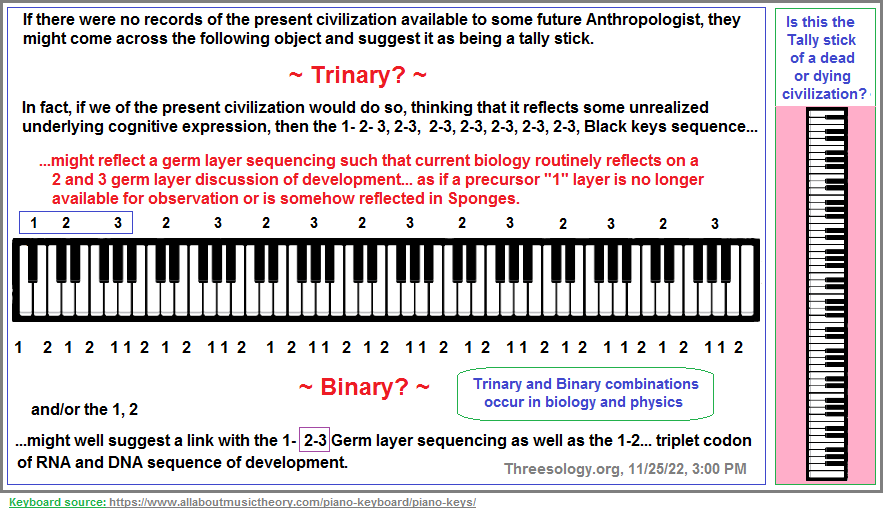
No one is looking at the 1- 2- 3- assignment of keys on a piano keyboard and saying that they see similar patterns in other types of cognitive activity as well as in biology and physics. While piano keys are aligned with letters and "fractionated" notes (notes in fractions) on a serialized scale, no one is viewing the keyboard as a type of tally stick, whereby it never comes to mind for anyone to think that the human mind has simply stopped its development at the tally stick making stage. In other words, although elaborate with colored keys (as a dichotomy) and constructed more "complexedly" (in a more complex manner), the same basic pattern of cognitive activity is taking place... which is a tally stick. Humanity is repeating the same cognitive activity and not moving away from such a mental practice of using a tally stick (such as a typewriter or computer keyboard). No less, the same activity of using a tally stick is seen when a person puts on a belt which may have several holes in which a peg... called a belt buckle or hasp can be fitted into, and used by some as a measurement of how much weight they are gaining or losing. Humanity has simply changed the mediums and mobility in which a tally making mentality remains fastened to its consciousness... and is not being replaced with a next generation of cognitive realization. No new invention of thought is being undertaken... just a repeat of the tally stick model of conceptualization occurring in multiple forms under different guises and labeling. Humanity is stuck spinning its cognitive wheels, so to speak. There is not new innovation in thinking taking place which will place the tally making behavior truly into the dust bin of history to mark a new era of thinking that might be called a Cognitive Revolution to be listed along with the Industrial and Scientific Revolutions.
If we were to make note of other common occurrences of tabulation (not necessarily described as a "tabulation" or even a count), one might come to see the correlations which are possible to be made. Let us take a few examples:
- Six pack of some beverage: 3 X 2 or 2 X 3 configuration seen also in insect leg associations as well as the Braille alphabet.
- Six pack, 12 pack, 18 pack of eggs, (This can be viewed as a 3 sixes of 6 arrangement, or 666.) (While a person can purchase larger groupings not necessarily designated with a number and commonly associated with commercial uses... such as those being labeled a crate or even box.)
- Roads seen as long tally sticks lined with numbers such as routes, speed limits, mile markers, destination distances...
- The Great Wall in China marks decades of development and can be viewed as a lengthy tally stick. (Chinese (Pinyin) Wanli Changcheng or (Wade-Giles romanization) Wan-li Ch'ang-ch'eng ("10,000-Li Long Wall"): (2 li equal approximately 0.6 mile [1 km]); "Great Wall of China." Encyclopædia Britannica, 2013.)
Let us note also that an everyday belt with buckle, clasp and holes, is a type of mobile tally stick keeping track of one's waistline measurement. The linear or stick clasp placed into a hole is not meant to convey a symbolic representation of a sexual nature, though the analogy may have had some presence in the mind of the originator of the idea. While the buckle has an ancient history of decorative design, not much is recorded about the leather strap (or other material being used).

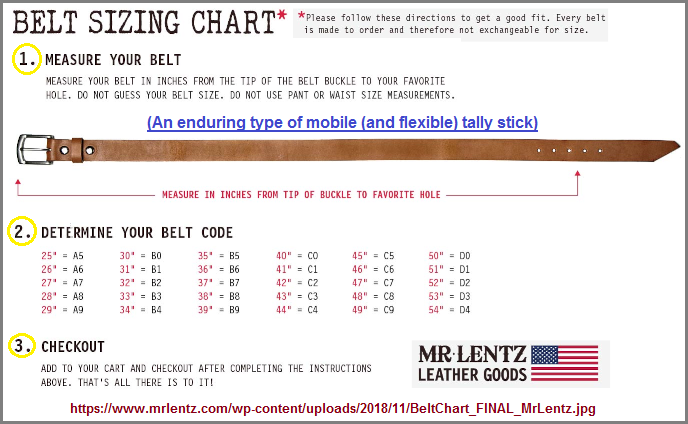
Buckle: clasp or catch, particularly for fastening the ends of a belt; or a clasplike ornament, especially for shoes. The belt buckle was often used by the people of ancient Greece and ancient Rome as well as by those in northern Europe, and it became the object of special care on the part of metalsmiths, who ornamented many buckles with rich and intricate designs.
Animal motifs were characteristic of Scythian and Sarmatian decorative arts, and their belts and buckles often represented animals entwined in mortal combat. Many Germanic peoples imported these motifs, and the belt buckles almost invariably present in the graves of the Franks and Burgundians are often further ornamented with bosses of silver or bronze, chased or inlaid. A fine example of a buckle of a heavy rectangular type decorated with filigree was found in the tomb of Childeric I, king of the Franks, who died in AD 481/482. Several 7th-century gold buckles with interlacing curvilinear patterns and cutaway tongues, now in the British Museum, London, were found in the Sutton Hoo ship burial. Throughout the Middle Ages, the buckle was used especially for ornamentation; but, during the second half of the 14th century, the knightly belt and buckle took on its most splendid form, and, after the early 15th century, the belt and buckle never again regained such importance.
The shoe buckle has also been important as an ornament. Jewelled buckles (with real or imitation gems) were worn during the reign of Louis XIV, and at about the same time the shoe buckle became popular in the United States. In 18th-century Europe, buckles became even more decorative. Fashionable fops of the 1770s reacted against simple styles and wore thin shoes with large buckles made of gold, silver, and other precious metals and set with imitation or real gems. In the 20th century jewelled or ornamented buckles were popular in women's fashions, though precious gems were rarely used.
"buckle." Encyclopæædia Britannica.
All subjects use some model of tally stick. For example, Geology provides us with the well known geologic time scale:
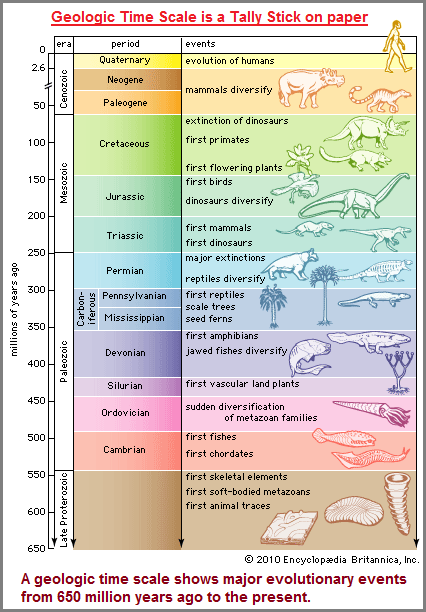
Another model of a tally sheet is seen in the visible light spectrum of 7 colors:
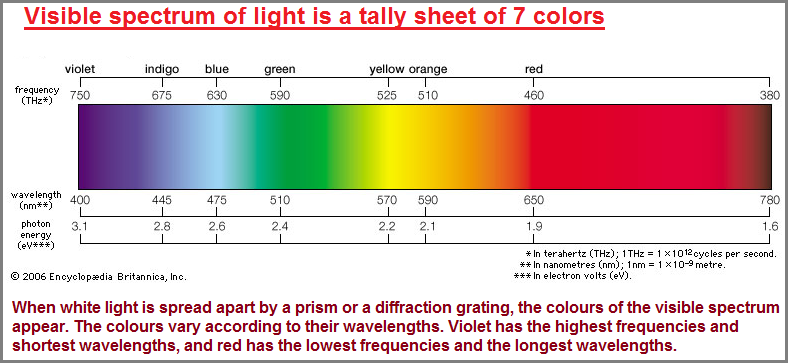
We have another example in the Cryogenic temperature scale:
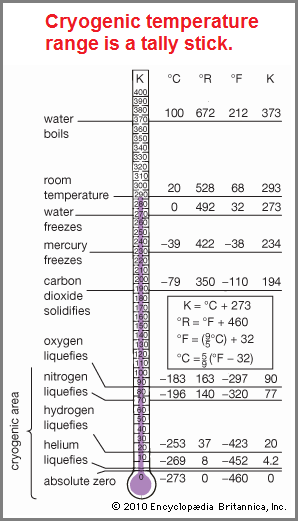
Since the discussion is about languages, it should be noted that a chart of vocal ranges can exhibit three attributes of a person's voice: chiefly 1) frequency, 2) harmonic structure, and 3) intensity. (speech." Encyclopædia Britannica.) The chart of vocal ranges is a tally sheet we can attribute to the hand of Nature. And if we focus on singing, since a great deal is made about such a behavior, we find an interesting pattern to be correlated with other patterns in other subjects.
Many different voice types are used in vocal pedagogy in a variety of voice classification systems. Most of these types, however, are grouped into seven major voice categories that are, for the most part, acknowledged across the major voice classification systems:
- Women are typically divided into three groups:
- soprano
- mezzo-soprano
- contralto
- Men are usually divided into four groups:
- counter-tenor
- tenor
- baritone
- bass
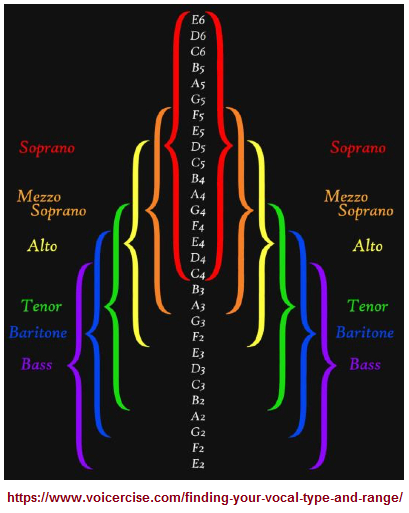
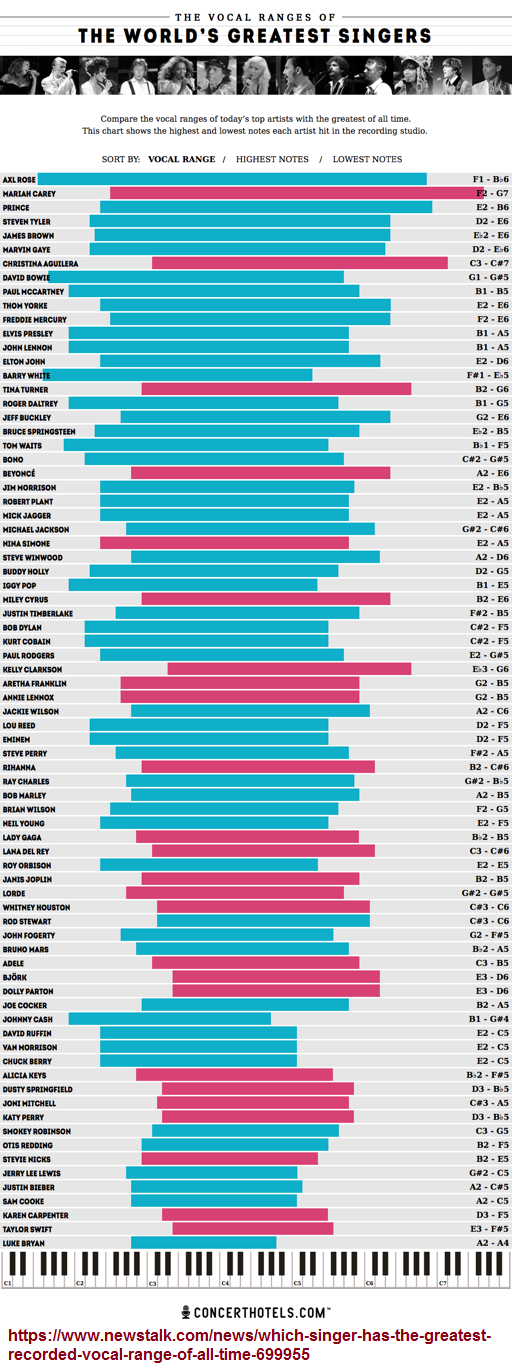
When considering the pre-pubescent voice, an eighth term, treble, is applied. Within each of these major categories, sub-categories identify specific vocal qualities such as coloratura facility and vocal weight to differentiate between voices. The vocal range of classical performance covers about five octaves, from a low G1 (in scientific pitch notation) to a high G6, although the extremes are rare. More commonly the range is from a low C2 to a high D6. Any individual's voice can perform over a range of one and a half to more than two octaves. Vocal ranges are grouped into overlapping types that each span about two octaves. Many singers fall between groups and can perform some parts in either type. (Wikipedia: Voice type)
Please note that there is a "7" reference being used in describing voice types. This idea was established long ago when the number "7" flourished as a sacred number. However, as we move closer to the present with its currency of knowledge about physiology having increased through the ages, we find in the following example the usage of a "three" reference. In those cultures where the "7" is still stressed as an important identification with some spiritual perspective, it may be emphasized in assessments. The following excerpt is an example of the "three" being used in a present day perspective (This statement is not meant to imply that all old assessments using a "7" reference are incorrect.):
Another current popular approach that is based on the bel canto model is to divide both men and women's voices into three registers. Men's voices are divided into "chest register", "head register", and "falsetto register" and woman's voices into "chest register", "middle register", and "head register". Such pedagogists teach that the head register is a vocal technique used in singing to describe the resonance felt in the singer's head. (Wikipedia: Singing)
I don't believe humanity is fully awake. I think human consciousness as we know it is in a type of limbo... a transitional state sleep walking and semi-consciousness. It is one way of explaining the recurrence of an "Age of Irrationality" that doggedly persists and that periodic effort to grasp ourselves out of the restrained somnambulance which is supposed to keep us immobile during sleep so that we don't hurt ourselves or another during a sleepwalking episode; but lessens its grip on those of us who have come face to face with the spectre in charge of keeping us subdued, sometimes viewed as a creature that sits on one's chest. And though some may distinguish that dreams and reality are appreciable different based on the view that dreams are erratic and reality seems more uniform, I would say that the uniformity can be an illusion since the lives of some people are very erratic, despite attempts to mollify circumstances or create a buffer of perception by way of some form of inebriation like drugs, alcohol, music, religion, and other obsessions found in business, sports and politics. Let me briefly provide an excerpt about how philosophers can think about distinguishing wakefulness and dreaming; a point about which I have just commented on:
Philosophers have long noted the similarities between reality and dreaming and the logical difficulties of distinguishing in principle between the two. The English philosopher Bertrand Russell wrote, "It is obviously possible that what we call waking life may be only an unusual and persistent nightmare," and he further stated that "I do not believe that I am now dreaming but I cannot prove I am not." Philosophers have generally tried to resolve such questions by saying that so-called waking experience, unlike dreaming, seems vivid and coherent. As the French philosopher René Descartes put it, "Memory can never connect our dreams one with the other or with the whole course of our lives as it unites events which happen to us while we are awake." Similarly, Russell stated, "Certain uniformities are observed in waking life, while dreams seem quite erratic." ("dream." Encyclopædia Britannica.)
And what of those who say they are "living their dream"? Or are "living a nightmare"? Are such linguistic exercises to be cataloged as analogical or metaphorical references for which we are required to read between or beneath some supposed line (linear) reference and create a mental hierarchical (triangular) substitution of the meaning to encircle us in some relative meaning approximate to some supposed cultural standards instead of thinking that such recurrences of linguistic expression are some tell-tale sign of tabulation we as a species are not accustomed to take into consideration or contemplate with a rational quite different for that expected of a person living in a given era?
Date of (series) Origination: Saturday, 14th March 2020... 6:11 AM
Date of Initial Posting (this page): 9th January 2023... 12:07 AM AST (Arizona Standard Time); Marana, AZ.